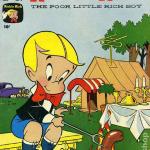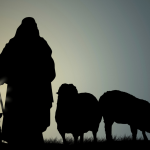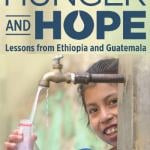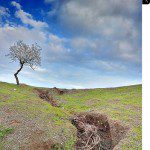GODSTUFF
TRAVELS WITH BRUCE:
INTO THE SOUL OF THIS WORLD OF WONDERS
There’s roads and there’s roads
And they call, can’t you hear it?
Roads of the earth
And roads of the spirit . . .
— Bruce Cockburn’s “Child of the Wind”
Mali. Mozambique. Central America. The Himalayas. Kosovo.
I’ve never been to any of these exotic locales, but I feel as if I have because of the more than 30 years of music made by Canadian singer-songwriter Bruce Cockburn.
He is, in a very real way, a citizen of the world. Apart from being one of the most accomplished and innovative contemporary guitar masters, Cockburn is a consummate storyteller, and for as long as I can remember, his musical stories have taken this kid from the suburbs to the far reaches of our world of wonders.
I last caught up with Cockburn 18 months ago in Bozeman, Mont., when he was at the tail end of a lengthy tour. Not long after, the singer left for a long holiday, first to Argentina (where he planned to learn Spanish and how to tango) and then to Nepal.
More than 20 years ago, Cockburn traveled to Nepal on a fact-finding mission with the Unitarian Service Committee of Canada, an international development organization that helps communities in the developing world create ecologically sustainable agricultural projects among the desperately poor. Cockburn has been involved with USC Canada’s work since 1970, the year I was born.
In late November 2007, Cockburn, now in his 60s, returned with the USC Canada team to see what progress has been made in the generation since he’d first visited Nepal, a longtime monarchy that is now the world’s youngest republic, snuggled in the Himalayas between China, Tibet and India.
This time, Cockburn took a film crew on a two-week journey where he traveled far beyond thriving Katmandu to the remote, largely Buddhist Humla district to visit some of the organic farming and micro-investment programs begun with the committee’s help.
The result is a beautiful and moving documentary film called, “Return to Nepal,” which was released late last year. (Click HERE to watch clips or order a DVD.)
Nepal is one of those magical places of my imagination that conjures images of flapping Buddhist prayer flags, smiling women and children swathed in colorful layers of wool, silk and cotton; prayer bells ringing in the background as herds of sheep wend their way through the foothills of the Himalayas.
But Nepal has not been as peaceful as my imagination would have it be. Throughout my lifetime it has been rocked by political and military turmoil, unrest that I first learned about as a teenager, in the lyrics of Cockburn’s music. In “Return to Nepal,” which Cockburn narrates, the hardships of Nepal aren’t ignored, but they never eclipse the beauty of the spirit of the Nepalese people and their mystical land.
“Step off the tourist path, and you find a different land altogether. It is to this hidden Nepal that I am traveling,” Cockburn says. On his 1987 journey he “discovered a country that is beautiful, complex and desperately poor. Wherever we went, I was moved by the Nepalese resilience and by their efforts to improve their lives. So now the winds have blown me back here to see how things have changed.”
The film opens with a close-up of Cockburn’s hands strumming his guitar. His music — some familiar tunes from his 22 albums, such as my favorite, “Child of the Wind,” and new tunes he wrote as journeyed through his return trip to Nepal that he calls, “Humla Meditations.”















